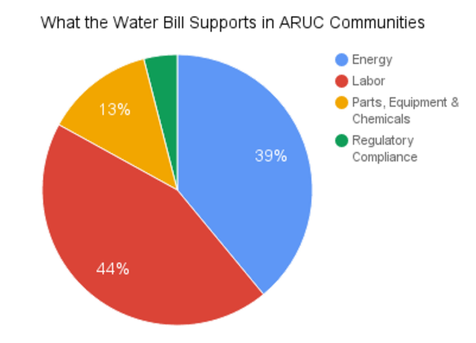What The Water Bill Supports
It can be easy to take water and sewers for granted, but providing these services can be quite costly. The cost of service varies greatly depending on the size of the system, the number of households served, the treatment required for a particular water source and the heating and cooling needs influenced by the local environment.
Knowing exactly what the money that you contribute through your monthly water bill actually covers helps you to justify making the payment. Although the percentage may vary from one community to the next, customer water bills often cover the following expenses:
- Energy: The electricity and fuel cost required to run the mechanical components of the water/sewer system.
- Labor: The cost required to compensate operators and support staff for their work.
- Parts and Equipment: The cost of new equipment for system upgrades, replacement and spare parts required when a component breaks or approaches the end of its lifespan.
- Chemicals: The cost of chemicals needed to treat the water or wastewater.
- Regulatory Compliance: The cost of sampling and testing required to meet regulatory standards.
The chart below shows a breakdown by percentage of what the average water bill supports in Alaska Rural Utility Cooperative (ARUC) communities.

By reviewing their budget, your water utility managers can identify categories and determine percentage of total cost for each category to create a similar chart for your community explaining how your contribution supports your specific community water system.
The Spokane Tribe’s Approach
The Spokane Tribe of Indians in Wellpinit, WA working in conjunction with the Environmental Protection Agency (EPA) came to the conclusion that their customers needed educational outreach to better understand the true cost of public drinking water. They identified a number of outreach strategies including: sending flyers to customers with their water bills, holding educational meetings and events, and educating children in schools on the provision of drinking water alongside providing information for them to pass along to their parents. The project team developed an educational poster to display in public areas.
Other Resources on Water Bills
- Where Do Payments Go?
A simple handout that ARUC has created for customers in their communities. - Utility Rate Setting
More information on how water utility managers determine water and wastewater bill rates. - Engage Your Community
Resources that will help you engage your community on the traditional value of water.